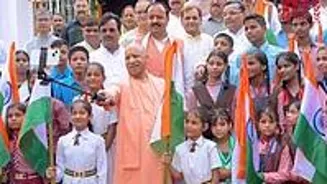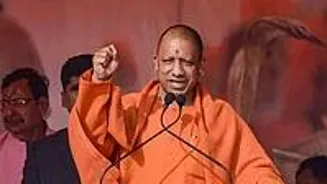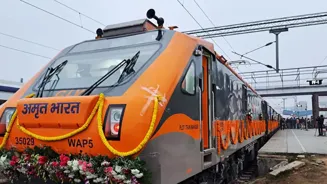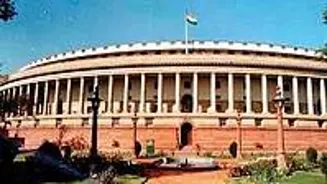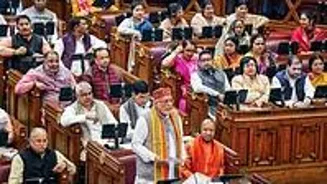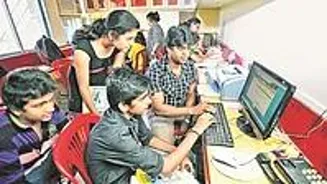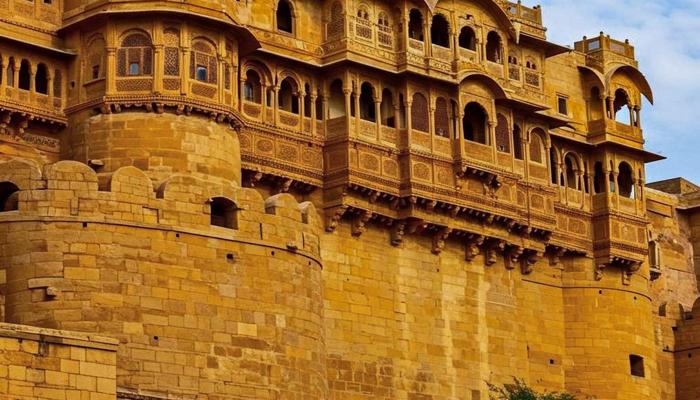Lucknow, Aug 9 (PTI) It was the evening of August 9, 1925. To fund the freedom struggle against British rule, a group of committed young revolutionaries planned a daring heist of a cast-iron cash box belonging
to the then British government from a train in Kakori near Lucknow.
And, they successfully executed it.
However, there are a few things that are not widely known about the Kakori Train Action.
As the country marks the 100th year of the incident, which was a significant event in India's struggle for independence, kin of those revolutionaries told PTI a few interesting and amusing details about the Kakori Train Action
Freedom fighter Ashfaqullah Khan's great-grandson, Ashfaq Ullah Khan, shared one amusing story.
He said just when the revolutionaries thought that the train robbery had been perfectly executed, they ran into an unexpected problem.
The iron chest that contained Rs 4,600 was much sturdier than they imagined, putting the plans and the lives of those involved, including Ashfaqullah Khan, at risk.
Ashfaq said all the freedom fighters who were part of the robbery were trying to break the lock of the cash box, but their efforts weren't yielding any results. And, with each passing moment, the danger and the risk were mounting, he added.
"So my great-grandfather (Ashfaqullah Khan) picked up a hammer and with two hard blows broke open the chest," Ashfaq said.
After breaking the lock, in a lighter vein, he remarked to his vegetarian revolutionaries that 'yeh taalaa todnaa poori sabji khaane waalo kaa kaam nahi hai (the task of breaking the lock open was not possible for those who eat poori sabji),' Ashfaq said with a smile.
Ashfaqullah Khan, along with revolutionaries Ramprasad Bismil and others, had prominently featured in the Kakori Train Action. "I, too, saw those iron boxes for the first time when I was merely 15 years old," said Ashfaq, who is 59 now.
The amount, Rs 4,600, may not be of much value today, but at that time, the figure was huge.
Adjusting for inflation, it could be nearly 11 lakh, said Ashish Kumar Tripathi, vice-president of Tax Lawyers Association.
Incidentally, the looting wasn't planned for August 9.
Rohit Khatri, who is a descendant of Ramkrishna Khatri, who also took part in the Kakori Train Action, said that initially, the heist was planned for August 8, but was later pushed to the next day.
A senior Railways officer told PTI that the Railways retained the practice of ferrying daily revenue in iron chests for over nine decades since the Kakori incident and discontinued it only a few years ago.
"The tradition of carrying cash in red-coloured iron boxes dating back to the Kakori Train Action era was discontinued in September 2018. In that system, the cash earned by every station was filled into a leather bag. The leather bag was then put in an iron chest. It was numbered.
"The iron chest would come to the cash office of the division, where it was counted. After this, the Railways used its own personnel to transfer the cash, with the Railway Protection Force (RPF) providing security," Kuldeep Tiwari, Senior Divisional Commercial Manager, Northern Railway (Lucknow Division), said.
The system has since changed, as the cash is collected by the representatives nominated by the State Bank of India from stations.
Back then, the cash box was made of wrought iron and measured approximately 2.5 feet in length and height and more than 1 foot in width, the senior DCM said.
Following the daring act of the revolutionaries of August 9, 1925, to fund the struggle against the British Raj, the freedom fighters, Ram Prasad 'Bismil', Ashfaqullah Khan and Thakur Roshan Singh were hanged to death in 1927 by the British government for their involvement in the incident.
In 2021, the Uttar Pradesh government renamed the revolutionary event as Kakori Train Action. The new name was used in official communications to refer to the event, which was usually described as the 'Kakori train robbery' or the 'Kakori train conspiracy'. PTI NAV MAN AMJ
AMJ


